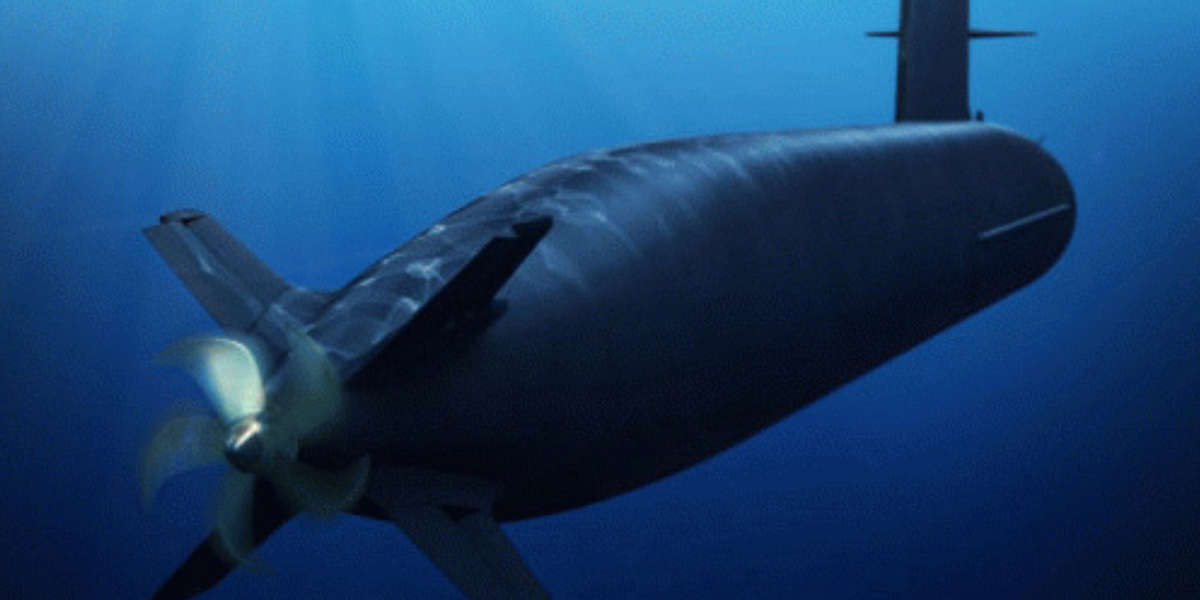In the picture
Artist's rendering of SN10 Álvaro Alberto [Marinha do Brasil]
report SRA 2024 / [PDF version].
The first plans for a nuclear submarine date back to the 1970s, but the end of the degree program A secret atomic agreement with Argentina after the dictatorship diminished its interest.
° Between 2022 and 2025, the Brazilian Navy will receive the four conventional submarines agreed with France, in a contract that includes attendance for the nuclear submarine.
° Brazil will be, along with Australia, the first non-nuclear country to have such a nuclear power. subject submarines; that does not contravene the NPT, but it may unsettle its South American neighbors.
Brazil has the second longest coastline in all of Latin America, which is protected by the 112 ships and vessels of the 'Marinha do Brasil'. While in 2023 the budget The Defense Ministry did not register a special increase – it reached 124,000 million reais (about 25,000 million dollars), representing 1.1% of GDP – there was a commitment to improve the Navy's equipment, allocating an investment of 3,400 million reais (about 690 million dollars) to the business Naval Project Manager for the construction of new capabilities, including the nuclear submarine, whose commitment has regained momentum with the new presidency of Lula da Silva. Thus, the budget of 2023, the first with Lula's return, included an item of R$291 million for the development of the Navy's nuclear technology and another of 249 million to advance the construction of the submarine, which began in October (a total of 109 million dollars).
This investment sample the "clear ambitions" of the Brazilian Navy "to become the strongest navy in Latin America, with an increase in investments in its surface and submarine fleet, and a growing projection towards the South Atlantic". This projection is reflected in the change in approach that Brazil is doing to also have a navy of blue waters and not just green waters, through its investment in the frigates of the class Tamandaré, the Riachuelo submarines and the nuclear-powered submarine.
Historic ambition
Brazil's ambition for a nuclear submarine dates back to the early 1970s. As a result of this initial impulse, in 1979 the Nuclear Marine Program (PNM) was created, which sought to understand the functioning of nuclear energy as a fuel, to build a submarine that would use that energy. source and reach the capacity to be able to operate it normally. Three projects were included in this programme, Cyclone, Remo and Side, aimed at designing and developing a nuclear reactor, and designing and building a submarine hull that could house the reactor.
The first project, Ciclone, was created with the goal to understand and develop a nuclear fuel cycle powerful enough to be used in a nuclear reactor. Brazil began to control this process and in 1982 was able to enrich uranium using a domestically built centrifuge. However, with the change of era (after the degree program In the absence of a nuclear war with Argentina during the respective military dictatorships, there was a certain lack of nuclear interest when democracy was restored) and the lack of resources, the program lost momentum. The centres and laboratories set up for the development of the submarine were then used to start up Brazil's two nuclear reactors for civilian use , which in 2023 generated 3% of its electricity (Angra 1 came into operation in 1985 and Angra 2 in 2001; a third plant is under construction and two more are in the planning stages).
The second project, Remo, was created with the intention of designing and developing a nuclear reactor that could be used on a submarine. This reactor would be in the pressurized water engine that the ship would use. The reactor was named RENAP-11 (11 megawatt naval reactor).
The third project, Lado, was created with the goal to design and build a submarine hull that could fit the reactor and that would be used to spend an unlimited time in blue water without having to surface for refueling.
After these three projects were shelved due to lack of interest and investment from the government, the program was abandoned. The idea of a nuclear-powered submarine was not returned to until Lula da Silva's second presidency, when the 2008 National Defense Strategy took up the purpose. Along these lines, the government signed several arms agreements with France, including the Prosub program for the construction of four conventional submarines, a nuclear-powered submarine and a naval base to house them, which would be carried out partially attendance Frenchwoman. The contract was never intended to be a agreement purchase and sale, but a technological cooperation contract in which France undertook to training Brazilian civilians and military personnel so that Brazil itself would build the four conventionally powered submarines, the hull of the nuclear submarine and a shipyard and a naval base in the municipality of Itaguai, located between Rio de Janeiro and São Paulo.
The Prosub programme as a whole provides for a expense total of about 8,000 million dollars. It should be noted that this project has helped, to some extent, France's recovery from the breakdown of the agreement that it had signed with Australia, as this country preferred the partnership provided by the new alliance with the United States and Great Britain (AUKUS).


